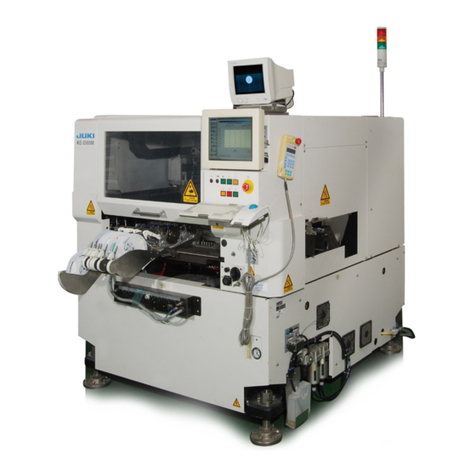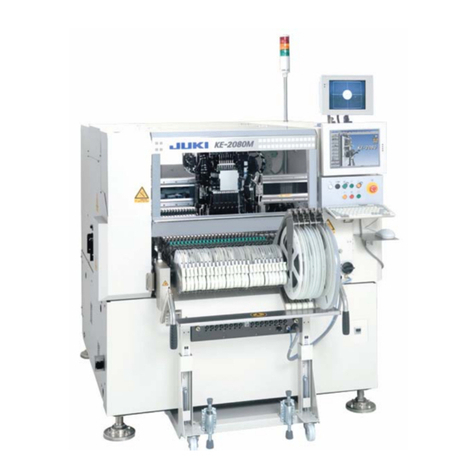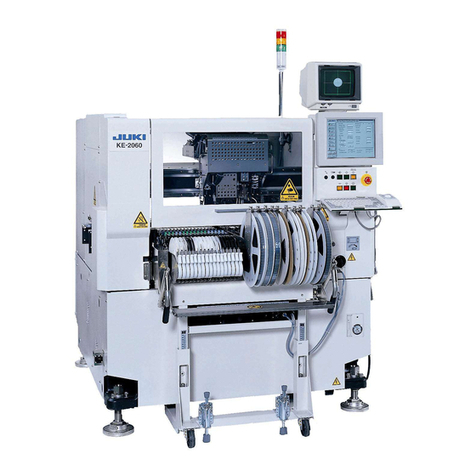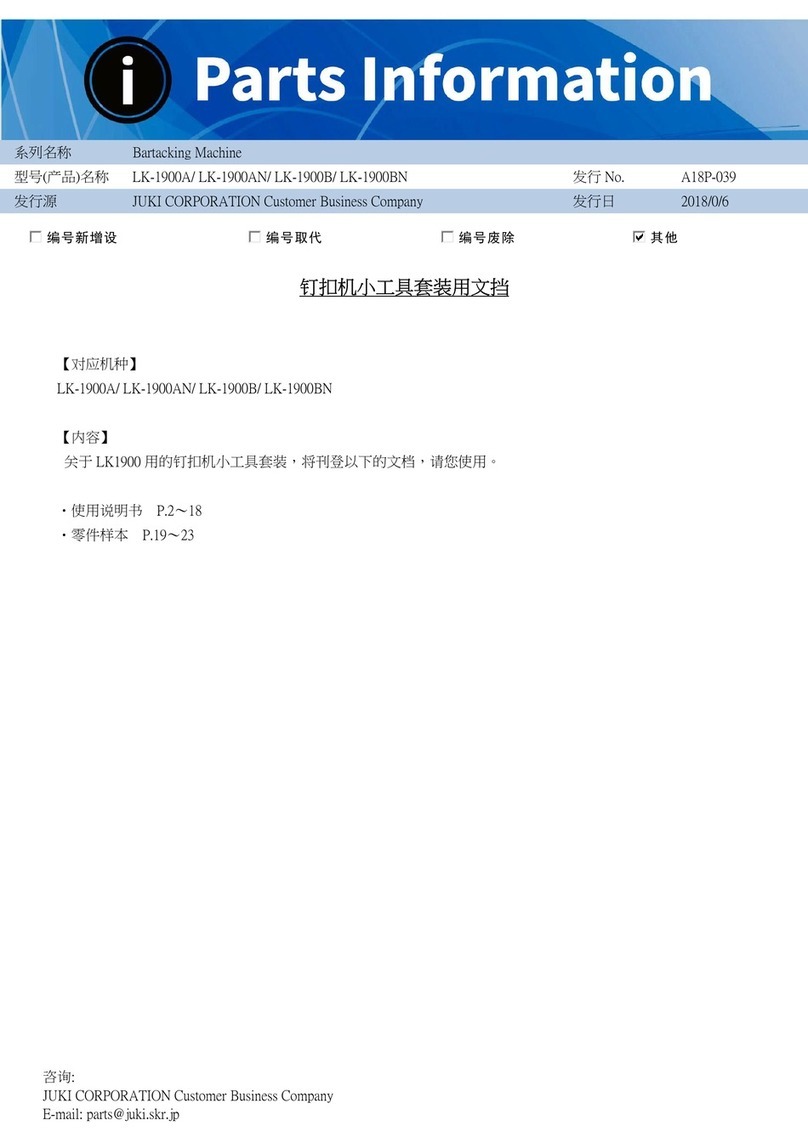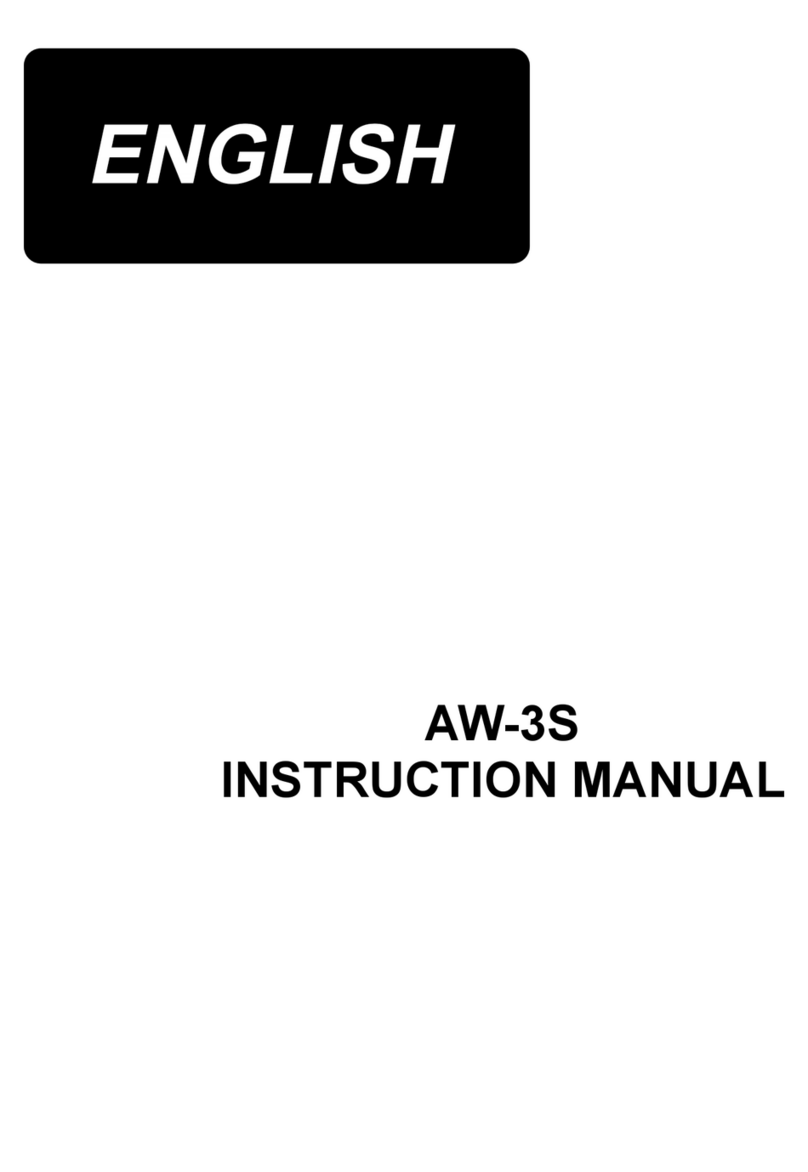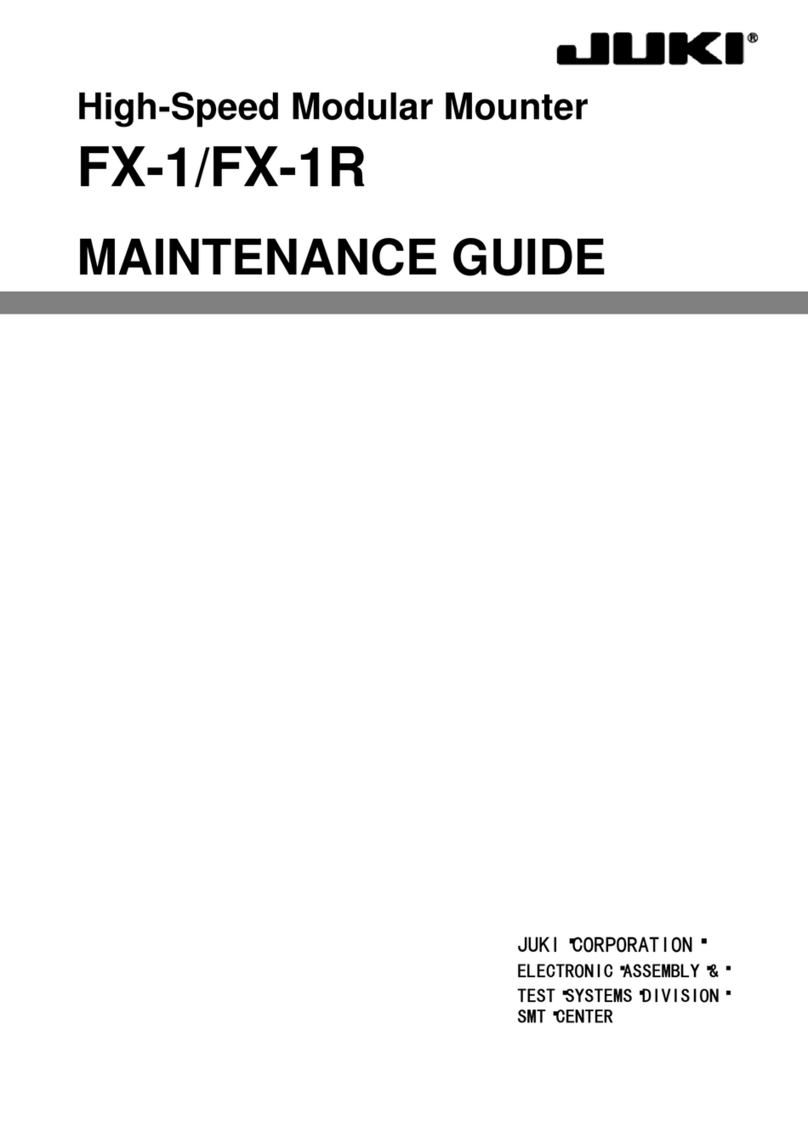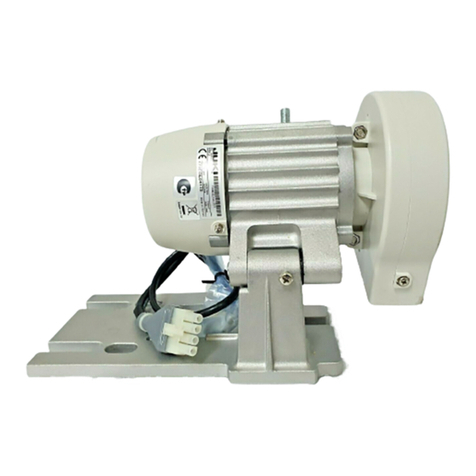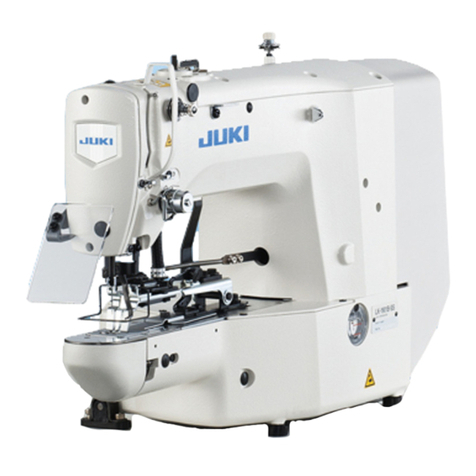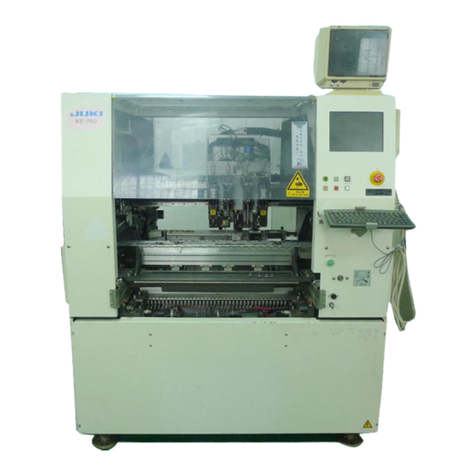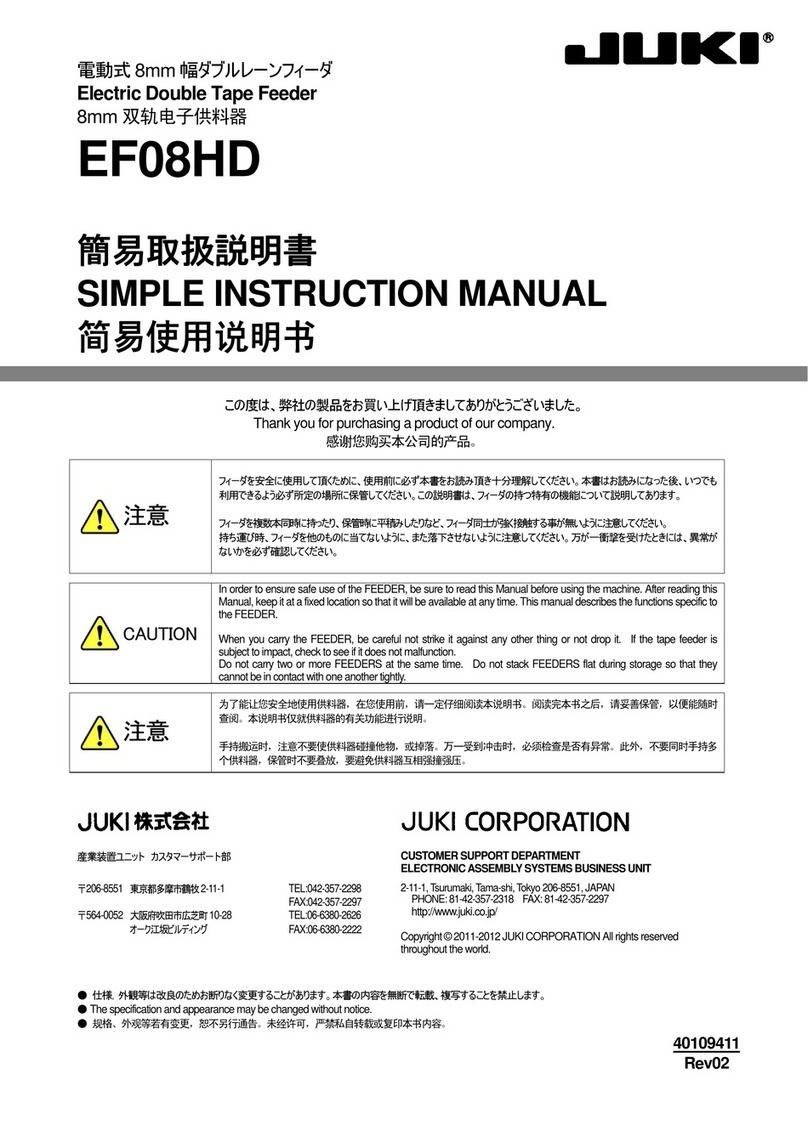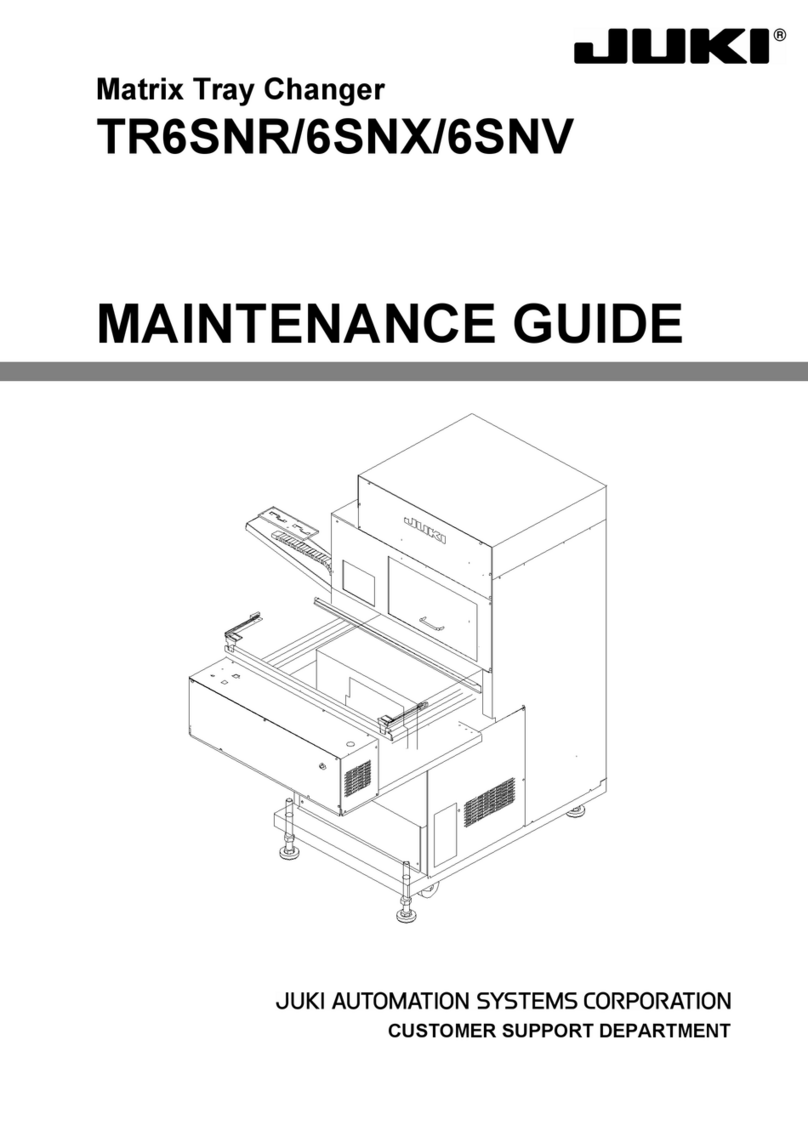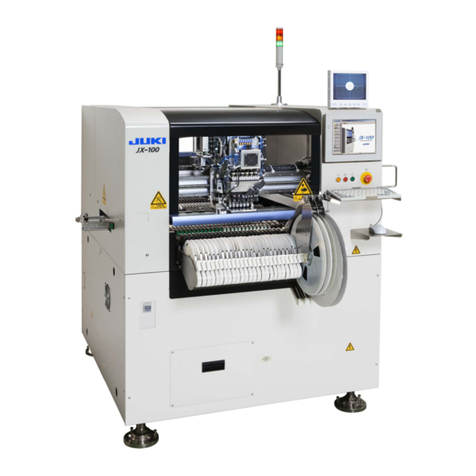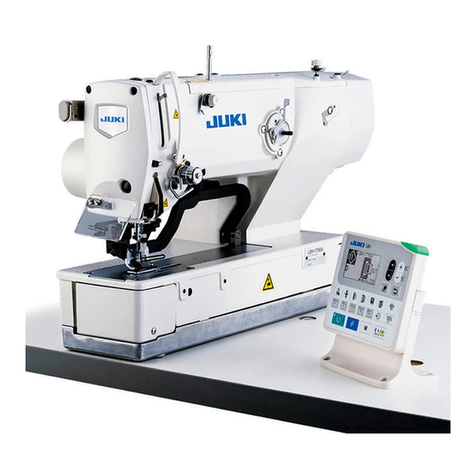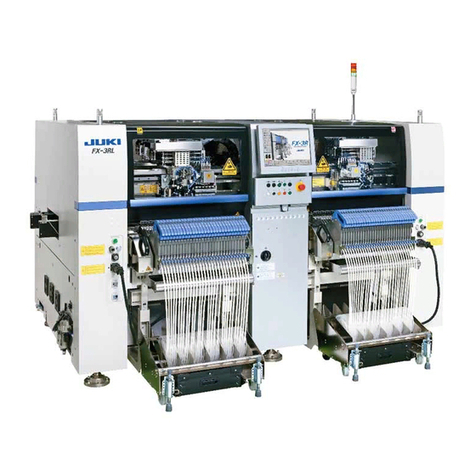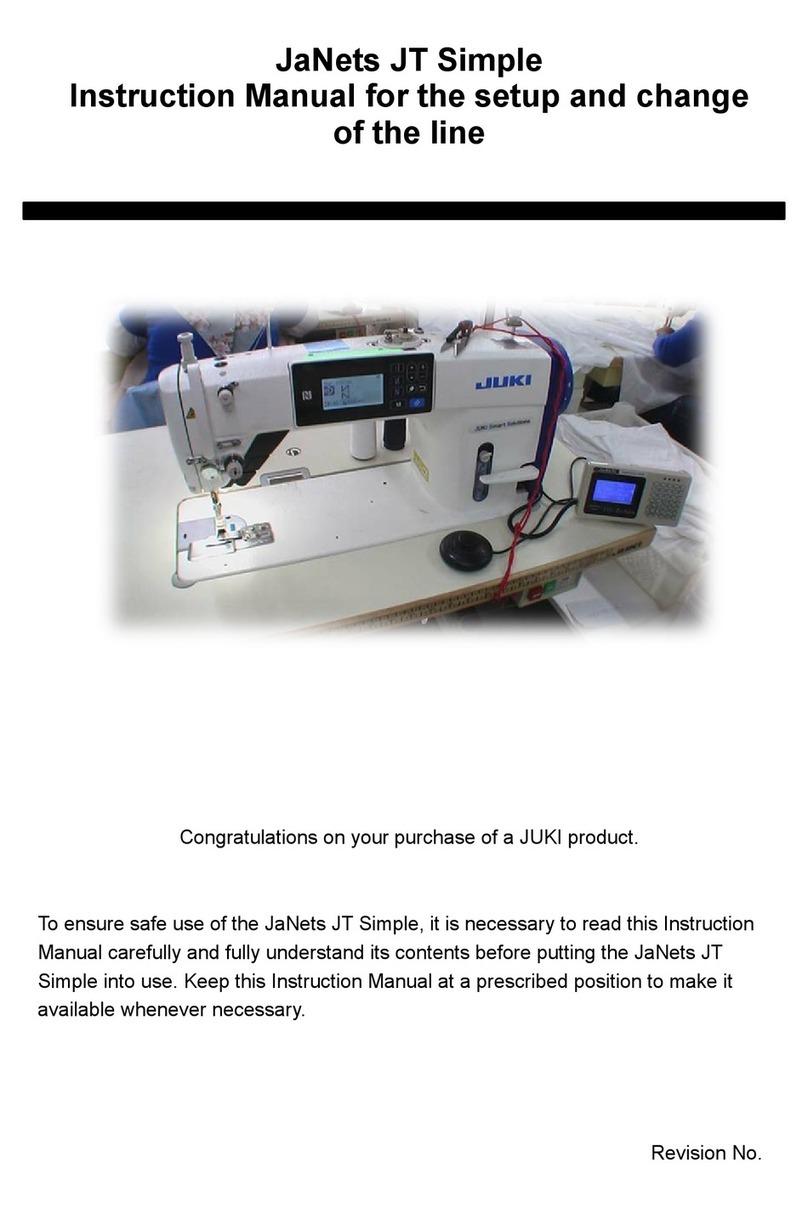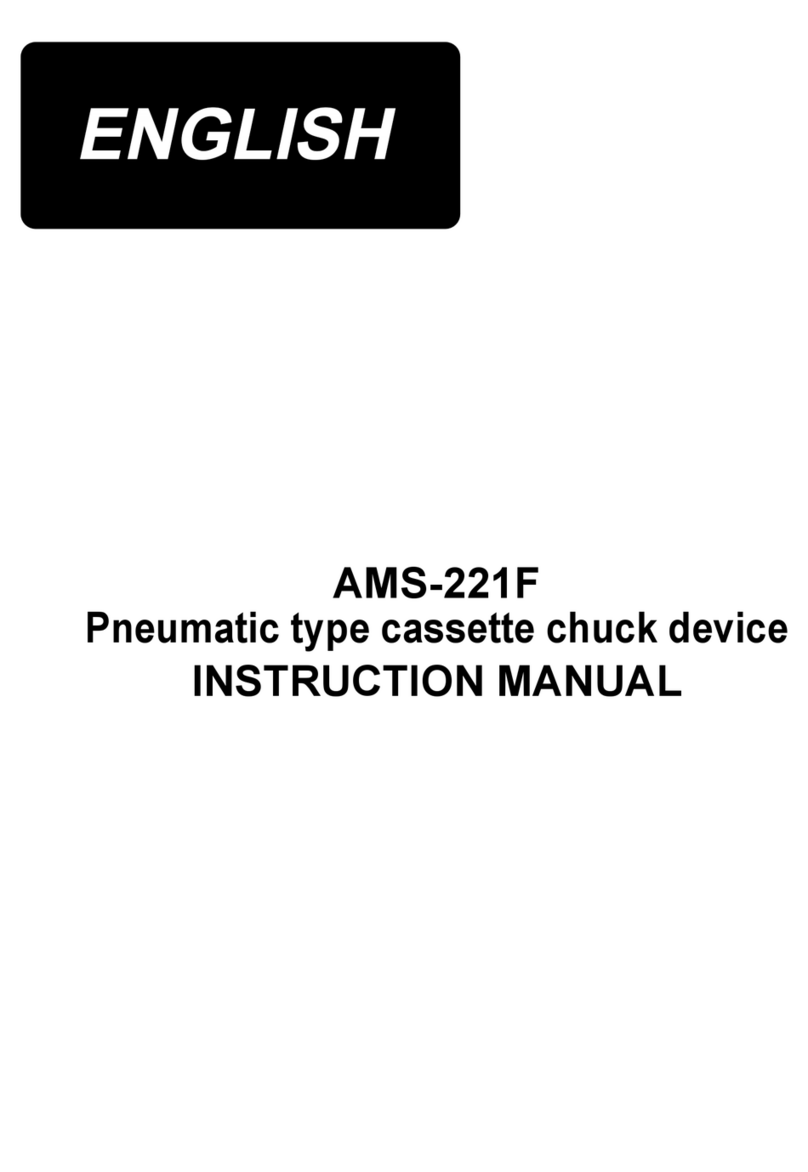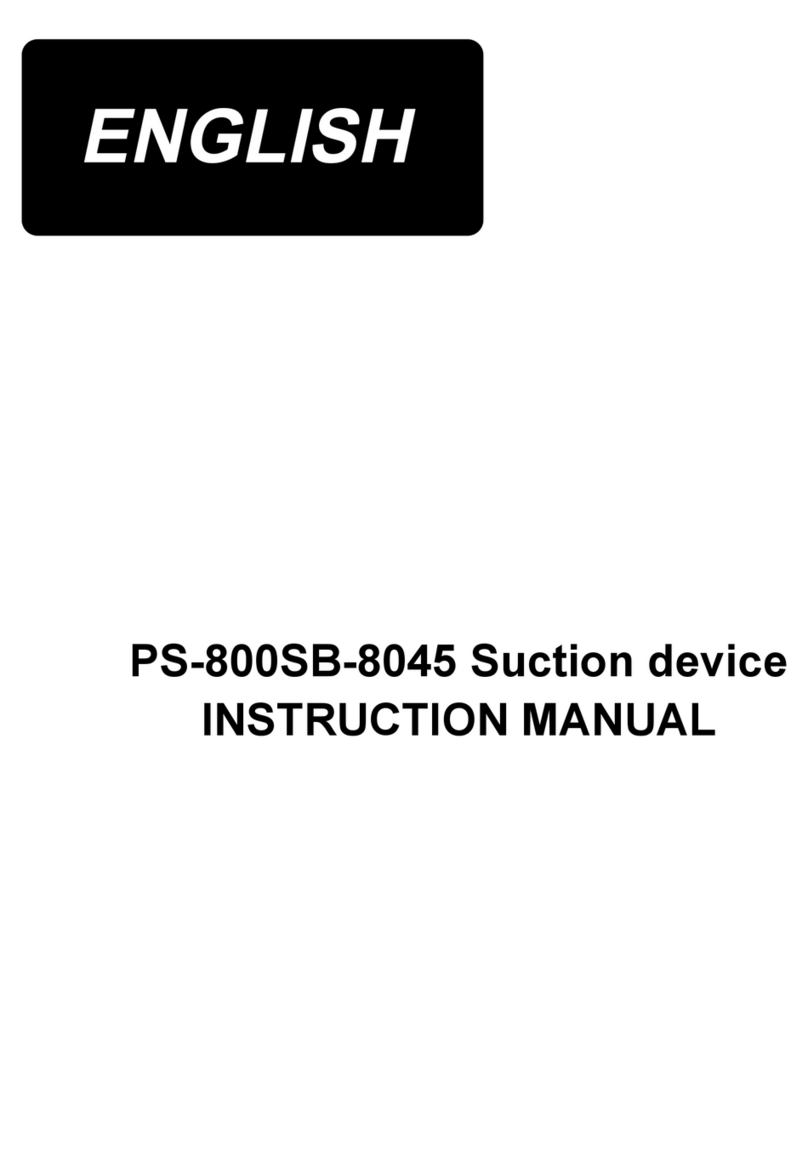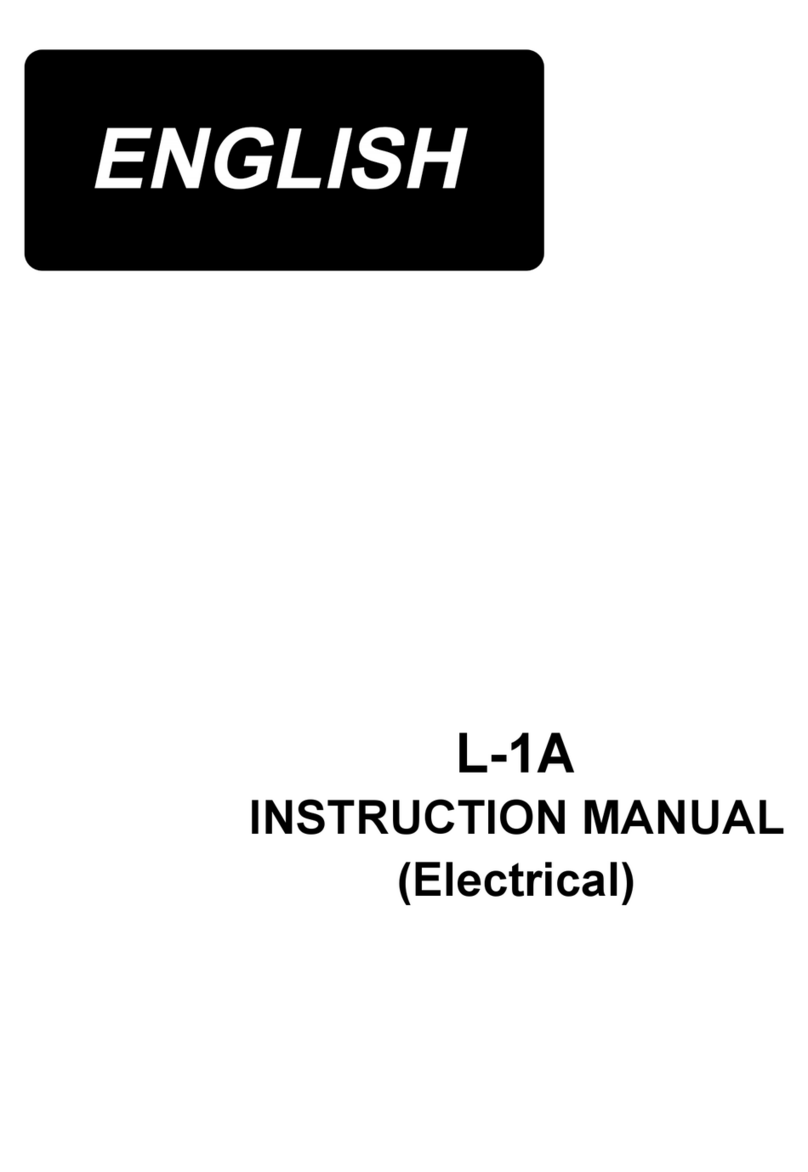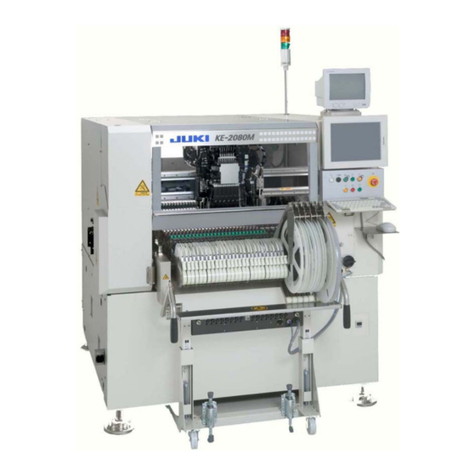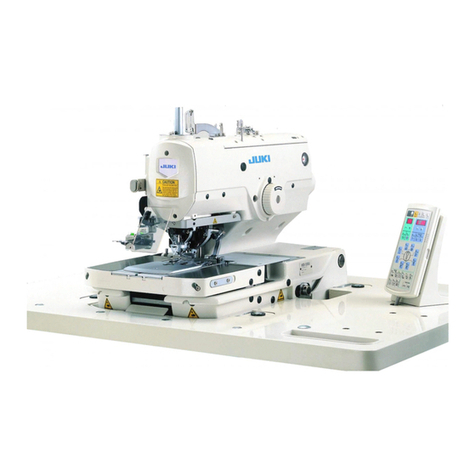
i
CONTENTS
1. SPECIFICATIONS .............................................................................................1
2. CONFIGURATION .............................................................................................3
3. INSTALLATION..................................................................................................4
3-1. Setting up the sewing machine ..................................................................................... 4
3-1-1. Unpacking ......................................................................................................... 4
3-1-2. Setting up the X-feed mechanism................................................................... 6
3-1-3. Installation position of the thread stand ........................................................ 8
3-1-4. Changing the position of the thread stand to the front side of the
sewing machine ............................................................................................... 9
3-1-5. Setting up the table ........................................................................................ 10
3-1-6. Setting up the switches, bobbin thread winder and switch button (asm.) 11
3-1-7. Points to be checked and precautions to be taken before turning the
power ON........................................................................................................ 12
3-1-8. Installing the air hose.....................................................................................14
3-1-9. Cautions for the compressed air supply (source of supply air) facility.... 15
3-1-10. Checking the needle entry point and hook timing...................................... 16
3-1-11. Checking the concentricity (How to handle the case where you
have checked the timing between the needle entry and the hook as
described in 3-1-10 and have found it is not correct) ................................. 18
3-2. Installing the bobbin winder device ............................................................................ 22
3-3. Winding the bobbin thread........................................................................................... 23
3-4. Precautions for installation of the machine ............................................................... 24
4. PREPARATION OF THE SEWING MACHINE ................................................25
4-1. How to attach / remove the cylinder lifting plate ....................................................... 25
4-2. Lubricating method and check of the oil quantity..................................................... 26
4-3. Attaching the needle..................................................................................................... 28
4-4. Threading the machine head ....................................................................................... 29
4-5. Bobbin replacement procedure................................................................................... 30
4-6. Adjusting the thread tension ....................................................................................... 31
4-7. Adjusting the thread take-up spring and the thread breakage detector plate ........ 35
4-8. Adjusting the thread take-up stroke............................................................................ 35
4-9. Needle-to-hook relationship ........................................................................................ 36
4-10. How to wind a bobbin................................................................................................... 38
4-11. Adjusting the position of the thread trimmer ............................................................. 39
4-12. How to conrm the amount of oil (oil splashes) in the hook.................................... 42
